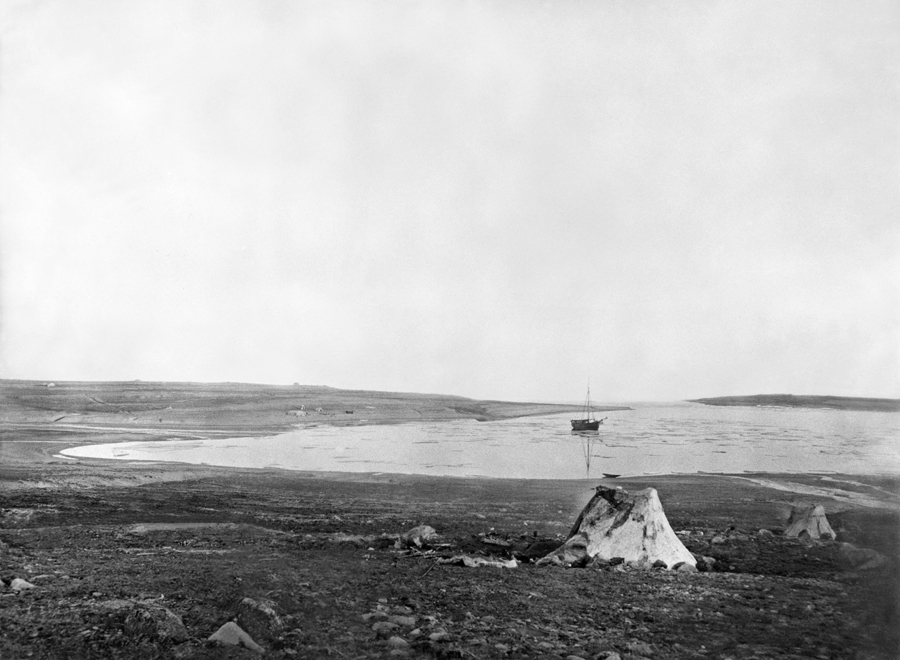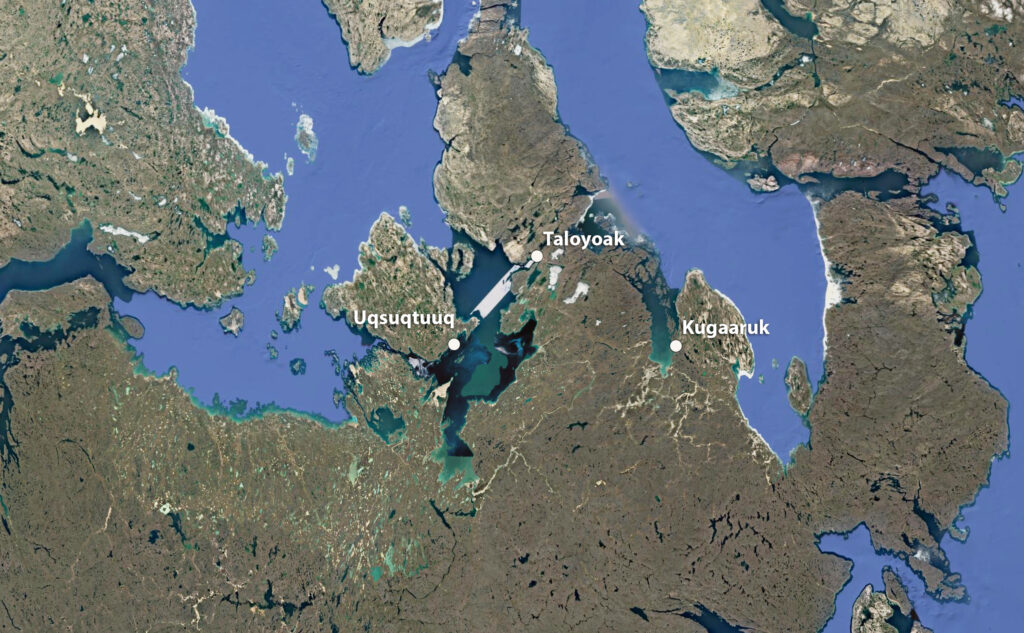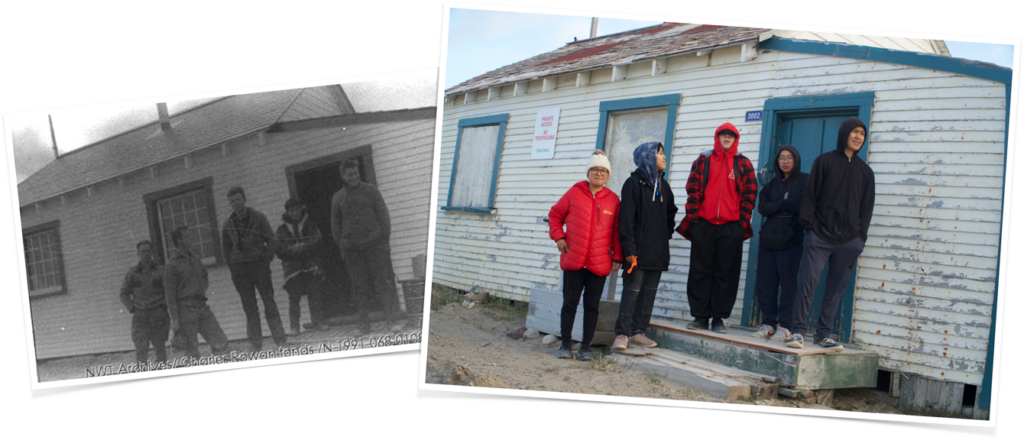The Hivumuuniaqtugut oral history project is devoted to youth-oriented oral history programming in Uqsuqtuuq/Gjoa Haven, Nunavut. Throughout the project, youth work closely with local Elders to document social histories and legend stories. These are recorded using film and presented at the Nattilik Heritage Centre.
The Nattilik Region
The Nattilik region is the traditional homelands of the Nattilingmiut. Inuit have made their home here for thousands of years and have deep knowledge of the land and wildlife here. This knowledge is carried on in legend stories and oral histories, which extend throughout the Nattilik region and beyond

A photograph of what is now Gjoa Haven, c. 1903
Since encountering qablunaat in the late 19th century, the traditional Inuit way of life has changed, slowly at first but more quickly as time went on. In the 1950s, Inuit from the surrounding area began moving into the communities – the result of policies of the federal government of Canada to bring a “modern” way of life to Inuit Nunangat. Those policies had significant and negative impacts on Inuit in many ways. Young people were taken from their families to attend Indian Residential Schools in faraway places, and many more were sent out for tuberculosis treatment and other medical services in places like Yellowknife, Edmonton, and Hamilton.

Today, the Nattilik region includes the communities of Uqsuqtuuq/Gjoa Haven, Kugaaruk, and Taloyoak. Histories of settlement changed some of the ways that Inuit live, but they have not changed the will or desire of Inuit – especially young Inuit – to feel that connection to the ancient ways and the values that have kept Inuit here for thousands of years.
These are still Inuit lands.

Our Approach to Research
Our approach to research is shaped through experiences of working together. We operate with the belief that we are stronger as a group than as individuals, and out of a desire to strengthen us further by creating opportunities for youth and Elders to work with one another. We share the following principles.
Centring youth voices and perspectives – Meaningful involvement of youth is at the centre of our project. Youth are the rightful inheritors of ancient knowledge that has been passed on from generations of Inuit. Youth must therefore be central to how research is conducted and the kinds of opportunities that are created.
Throughout the project, youth take on key roles of conducting and filming interviews with Elders. Youth are responsible for arranging interviews and asking questions.
Sharing research with the community – Sharing research is an important part of our work. To achieve this, we record all the interviews and make these available to the community through the Hivuumuniaqtugut digital oral history archive.
Ensuring local control – All stories and information gathered from the interviews is stored with the Nattilik Heritage Centre in Uqsuqtuuq. The Nattilik is the authority on all research associated with the project, and permission for access must be obtained from the Nattilik.


